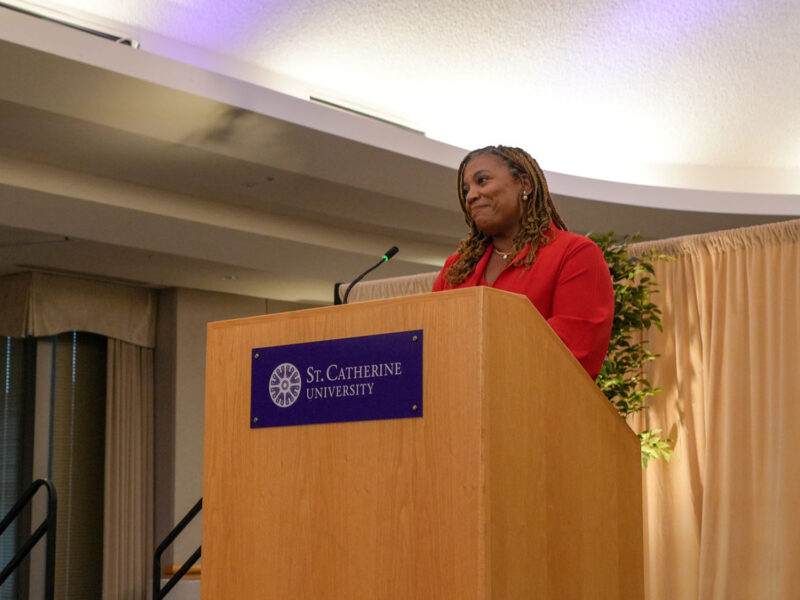Six questions to ask when helping your client choose a charitable gift annuity or charitable remainder trust.
By Mariah Brook, Director of Gift Planning
Life income gifts are receiving renewed attention, but they’ve always been powerful planning tools. They combine a charitable gift with an ongoing income stream for the donor and/or other people they care about.
There are a few types of life income gifts to choose from and knowing which one is right can be confusing for both a donor and their financial, legal, and tax advisors. This article will simplify the options and make choosing the right one much clearer.
Life income gifts come in two basic types – charitable gift annuity (CGA) and charitable remainder trust (CRT) – and both follow the same basic blueprint:
- Donor makes an irrevocable charitable gift
- Income is paid to the donor(s) or other people they care about
- When the income comes to its scheduled end, the remaining assets are used for charitable purposes
In most cases, the donor receives a charitable income tax deduction for the expected charitable remainder at the time they create the CGA or CRT.
Charitable gift annuities and charitable remainder trusts differ in some important ways and those differences determine which is the right choice. Rather than listing off the differences, it is more helpful to explore the donor’s goals — both financial and charitable. When those goals are known, the right gift type becomes crystal clear.
Here are some questions that will help you identify if a CGA or CRT is right for your donors’ charitable giving goals.
Do they need/want additional income?
This may seem like an odd thing to ask, but very often the subject of life income gifts is discussed because someone assumes the donor/client wants or needs more income. Life income gifts are powerful tools and can accomplish many things, but sometimes it’s overkill.
An outright gift may be the right choice for the donor if they really don’t need more income. If that is the case for your clients, have them consider combining their donor advised fund with their estate planning. If the donor doesn’t already have a donor advised fund (DAF) look at some of our fund options, as well as the benefits to partnering with a community foundation.
Does the donor want fixed or variable income?
Generally, if the donor is older, they may favor a fixed income. If they are younger and will be receiving income for many years, they may favor the possibility for increased income over time.
Furthermore, would they like income paid for the lifetimes of the income beneficiaries or for a specific term of years? In some cases, only lifetime is an option. In others, the donor can choose either a lifetime or a term of years or combine both.
For example, income could be paid to a beneficiary for their lifetime and then for a term of years to another income beneficiary. A donor can get very creative with the income stream options.
What asset will the donor be contributing?
Not all life income gifts can accept all asset types. If the donor wants a fixed income but wants to contribute something illiquid such as real estate, options may be limited or nonexistent. They may have to give a different asset or accept variable income.
Does the donor want the income paid to themselves, their spouse, and/or others?
CRTs can distribute income to many people, but CGA income can only be issued to a maximum of two persons.
Does the donor want income to begin immediately or in the future?
Both CGAs and CRTs can provide either immediate or future income. If they wish for income to begin in the future, would they prefer a specific start date or the flexibility to turn on the income when they choose?
How many nonprofits does the donor wish to benefit from their gift?
When someone establishes a CGA or CRT with the Saint Paul & Minnesota Foundation, the remainder can benefit multiple nonprofit organizations chosen by the donor and offer them the flexibility to change the charitable beneficiaries in the future. This is one of the unique benefits of partnering with a community foundation such as the Foundation.
See Which Life Income Gift Works Best for Your Client
Once all these questions are answered, the right life income gift becomes clear. This easy-to-use grid will help you in identifying the right gift for your client.
| Immediate Charitable Gift Annuity | Deferred Charitable Gift Annuity | Charitable Remainder Unitrust | Charitable Remainder Annuity Trust | |
| Income Type | Fixed | Fixed | Variable | Fixed |
| Income Term | Lifetime Only | Lifetime Only | Lifetime, Term of Years, or Both | Lifetime, Term of Years, or Both |
| Accepts Illiquid Assets? | No | No | Yes | No |
| How Many Income Beneficiaries? | One or Two | One or Two | Unlimited | Unlimited |
| Future Income Start Date | No | Yes | Yes | No |
| Flexible Income Start Date? | No | Yes | No | No |
These questions and grid are powerful planning tools and require careful consideration. By partnering with the Foundation, we can support you in helping your donor choose the right option.
Contact Us for a Custom Life Income Gift Illustration
Our experienced team can create custom illustrations for all life income gift options. An illustration shows what the income tax deduction and income stream could look like. We can also provide counsel as to which options might work best based on the donor’s goals.
To contact a gift planner, call 651.224.5463 or email us at philanthropy@spmcf.org.
The Saint Paul & Minnesota Foundation does not provide tax, legal, or accounting advice. Please consult your own tax, legal and accounting advisors regarding your individual situation before engaging in any transaction.
As Director of Gift Planning at the Saint Paul & Minnesota Foundation, Mariah Brook helps individuals and families initiate and express their philanthropic plan to maximize their giving. In her role, Mariah also provides nonprofits the support to start and grow their endowments and works alongside professional advisors to help them achieve their client’s philanthropic goals.









